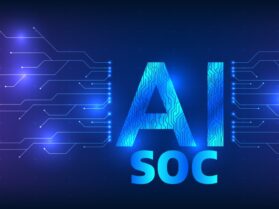Security vulnerabilities are continuously evolving amidst the technological wave. The impact is evident on application programming interfaces (API) as well, which hattackers frequently target with malicious intentions. APIs are a crucial element of programming and application management. Recent research has found that over 84% of security professionals across industries encountered API-related security incidents.
Energy and utilities are among the worst-hit domains, with around 91% of recorded reports, followed by retail and e-commerce, with 68% of cases. Therefore, API protection has become an alarming need for companies operating in diverse sectors.
This blog offers a thorough guide on understanding API security, prevailing types of API attacks, benefits, and best practices to secure API. Let’s dive in...
What is API Security?
An API or application programming interface consists of predefined rules that enable software to interact with each other. In simple terms, APIs empower applications to communicate with other software while required, through set protocols. Therefore, API security is the process of safeguarding APIs from evolving threats.
For example, while installing and signing in to new software, we are often offered the feature of logging in from Google or Facebook profiles. For the purpose of retrieving required data, the APIs of both applications allow them to interact with each other. API-related security measures eliminate risks against such procedures.
Most Common Types of API Attacks
The Open Web Application Security Project (OWASP) has identified ten types of API attacks that can cause devastating outcomes, including broken object-level authorization, broken function-level authorization, improper assets management, broken user authentication, lack of resources, and rate limiting, mass assignment, security misconfiguration, injection, excessive data exposure, insufficient logging and monitoring. Let us discuss the most critical classifications-

Authorization-based Threats
Inappropriate authorization allows API applications to access confidential user data, which is unlawful. In case of any vulnerability, attackers can break into the API system and steal user data.
Authentication Risks
Threats related to authentication take place when attackers get API access to an application. Man in the middle is an example of API risks raised by authentication. Such incidents occur when unknown users get API access without appropriate verification.
Possibilities of DoS and DDoS
API security threats can arise following defaulters' multiple requests to log in through API. Such activities create disruption in the entire process, triggering vulnerabilities that attackers take advantage of, causing DoS and DDoS attacks.
What is API Security Testing?
API security testing is a process of tracking the protective measures integrated to safeguard APIs. The methodology closely scrutinizes each endpoint within an API to trace weaknesses and address them accordingly.
Uninterrupted security testing allows for the protection of user data on APIs from unwanted threats and breaches. It establishes an invisible sheet that consistently analyzes whether all the security elements are in place or not.
A robust API protective framework includes continuous testing, evaluating, and promptly fixing minor to bigger vulnerabilities. The technique enables applications to stay aware of the shortcomings within a security framework.
Listing Down Key Advantages of API Security
APIs are significant components of digital transformation. Data states that more than 83% of global internet traffic is driven through APIs, and security risks related to it can impact organizations remarkably. Therefore, it is significantly crucial to adopt strategies to secure APIs.
Safeguarding User Data
Securing API enables applications and firms to protect user data from probable threats. After a data breach, attackers can use the confidential information for malicious purposes, creating identity threats to individuals. Adopting protective methods for APIs can address such challenges.
Maintaining Regulatory Compliance
API security allows applications and users to stay compliant with the security regulations of different regions, including GDPR, CCPA, and HIPAA. Violating such regulations can also cause criminal breaches. Hence, securing APIs contributes to addressing such factors as well.
Overlooking Financial Loss
Application programming interface attacks can impact applications and users in many ways, causing significant financial losses. So, protecting APIs also allows peers to prevent such threats.
Strengthening Security Framework
API security is an essential step toward a strong security architecture. It contributes to preserving enhanced security for applications as well as users. Such an approach also helps establish trust among the public and limits the chances of cyberattacks.
Securing Tomorrow — API Security Best Practices to Implement
#1 Continuous Assessment and Monitoring
Regular monitoring and assessment of an API lifecycle not only supports in identifying vulnerabilities but also allows to take necessary steps to get rid of such risks. It is a premium yet lengthy method to protect APIs due to its continuity. To implement this method, firms can utilize tools and manage a specified team with monitoring capability.
#2 Adopt a Zero-Trust Architecture
A zero-trust security framework takes each user, device, location, and other element under consideration while giving access to an application or resources. Implementing such an approach allows for addressing major API security risks, including authentication as well as DoS and DDoS-based attacks.
Zero-trust architectures intend to provide resource access to the appropriate individuals only through identity assessment, eliminating the possibility of increased data exposure to unauthorized individuals.
#3 Use Tokens and Encryption Methods
Encryption and tokenization can solidify API security, reducing the possibility of data breaches and threats. The techniques involve using specified encryption keys and tokens to authorize APIs to extract data from other applications. Hence, if attackers try to break into APIs and steal data, they will be asked to put certain codes that are known to valid users only.
#4 Implement Open authorization
Open authorization or OAuth creates a security barrier between application management clients and users. The process enables tokens to users, making it easy for application clients to identify end-users. Wrong credentials indicate unauthorized access trial, following which appropriate end-users are notified.
#5 Utilize API Gateways
Gateways work as reverse proxies in API, enforcing the traffic with standard security. The set standards examine the identity of each user in the API. Such mechanisms track and monitor how a particular API is being utilized.
Staying Vigilant is the Key to a Secure Future!
As security vulnerabilities increase everywhere, the requirement to adopt a strong security framework is also enhanced. Application programming interfaces are a common target of cyber attackers due to third-party involvement. Nevertheless, securing API is not a challenging task. With appropriate tools and methodologies, API security can be restored.
One of the common yet effective tactics to safeguard APIs is continuous testing. It is a crucial component of CI/CD that helps in the easy tracking of vulnerabilities. Alongside that, staying aware and informed is also important to stay ahead of the attackers in the digital age
Follow SecureITWorld blog updates and stay aligned with the latest cybersecurity practices!
Frequently Asked Questions:
Q: What are the pillars of API security?
There are three pillars of API security: continuous API testing, API protection, and API access control. Each component needs to be fully functional to integrate solid security parameters.
Q: What is API full form?
An application programming interface or API is a process through which different applications communicate with each other. Here, the application is the software, and the interface refers to the center-point through which applications interact.





